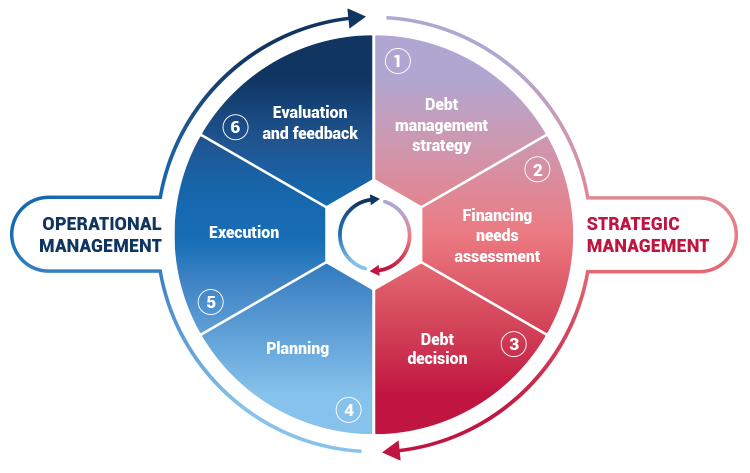Everything You Required to Find Out About Producing a Personalized Financial Obligation Administration Plan
In the world of personal finance, designing a tailored financial debt management plan is commonly the keystone of attaining monetary stability and comfort. By carefully examining your current financial commitments, setting attainable monetary objectives, and crafting a sensible budget, you pave the way for efficient financial obligation payment strategies. However, the journey to financial liberty is not only about initial planning; it additionally calls for recurring surveillance and changes to ensure continued development. As you navigate the complexities of creating a tailored financial debt monitoring strategy, recognizing the intricacies of each action is crucial to your monetary success.
Assessing Your Present Financial Obligation Circumstance
One should initially carry out an extensive assessment of their current financial debt obligations before formulating a reliable debt administration strategy. Evaluating your current debt circumstance is a vital first action in gaining control of your finances. Begin by collecting all necessary economic documents, such as credit scores card declarations, loan arrangements, and any impressive costs. Develop a detailed listing of each financial obligation, including the total amount owed, interest rates, minimum month-to-month payments, and due dates. This comprehensive summary will supply a clear photo of your monetary standing and aid prioritize which debts to address first.
After assembling this information, calculate your overall debt-to-income proportion by splitting your regular monthly financial debt payments by your month-to-month income. Recognizing these aspects of your monetary scenario will direct you in establishing a customized financial obligation monitoring plan tailored to your certain demands and goals.
Setup Financial Goals and Targets

When setting monetary objectives, it is essential to be details, quantifiable, achievable, appropriate, and time-bound (WISE) For example, you might set an objective to pay off a certain quantity of financial debt within a details time framework, such as lowering your bank card equilibrium by $5,000 in the next 12 months - More Discussion Posted Here. By setting clear targets such as this, you can track your development and stay encouraged to achieve your debt monitoring goals
In addition, take into consideration prioritizing your debts based upon factors such as rate of interest prices, outstanding equilibriums, and payment terms. By concentrating on high-interest financial debts first, you can conserve money over time and increase your trip towards financial flexibility. Bear in mind, each individual's financial scenario is one-of-a-kind, so customize your targets and objectives to fit your specific needs and circumstances.
Producing a Realistic Budget
Crafting a well-defined budget plan is an essential action in efficient financial obligation monitoring and financial planning. A reasonable budget plan serves as a roadmap for your economic wellness, aiding you track your revenue, costs, and financial obligation settlements. To produce a functional spending plan, start by listing all your sources of income.
Consistently evaluation and readjust your budget as required to remain on track with your monetary goals and financial obligation settlement plan. By adhering to a practical budget, you can effectively handle your financial obligation and work towards a more protected financial future.
Checking Out Financial Obligation Settlement Methods
After establishing a sensible spending plan, the following important step in reliable financial debt management is to explore numerous debt payment methods. One common strategy is the snowball technique, where you concentrate on repaying the tiniest debts first while making minimal settlements on bigger financial obligations. This method can help develop momentum as you see smaller sized financial obligations being gotten rid of, giving inspiration to take on bigger ones.
An additional approach is the avalanche approach, which includes focusing on financial debts with the highest rate of interest. By targeting high-interest debts first, you can decrease the overall amount you pay in passion gradually. This technique might be more cost-efficient in the long run, although it could take longer to see specific financial debts totally paid off.
Financial obligation loan consolidation is one more option where you combine multiple debts right into a single funding with a reduced rates of interest. This can streamline your payment process and potentially lower the overall rate of interest paid. However, it's important to very carefully think about the terms and fees associated with consolidation to guarantee description it's the right option for your monetary circumstance.
Surveillance and Changing Your Strategy

Changing your strategy might entail reapportioning funds to tackle high-interest financial obligations first, discussing with creditors for lower passion prices or far better repayment terms, or discovering extra earnings resources to quicken debt settlement. As your financial situation develops, your debt administration plan need to adjust as necessary to continue to be reliable. By staying adaptable and aggressive in monitoring and changing your plan, you can optimize your efforts towards repaying your financial debts successfully and attaining your economic objectives.
Final Thought
To conclude, producing a tailored financial obligation monitoring plan involves evaluating current financial debt, establishing monetary goals, creating a realistic budget, discovering payment techniques, and monitoring and changing the plan as required. By complying with these steps, people can take control of their financial circumstance and work in the direction of becoming debt-free. It is crucial to stay disciplined and dedicated to the plan in order to attain lasting monetary security.
One need to first perform a comprehensive evaluation of their existing financial obligation responsibilities prior to formulating a reliable debt administration plan.After establishing a sensible budget, the next critical step in effective financial obligation monitoring is to explore numerous financial obligation settlement methods - More Discussion Posted Here.To effectively handle your debt, continual monitoring and modification company website of your financial debt management strategy are crucial components for long-lasting economic security.Readjusting your plan might include reapportioning funds to tackle high-interest financial debts initially, working out with financial institutions for reduced rate of interest prices or far better payment terms, or discovering extra revenue resources to speed up financial obligation repayment.In verdict, creating a tailored debt monitoring plan entails assessing existing debt, setting financial objectives, creating a realistic budget, checking out settlement methods, and tracking and changing the strategy as required